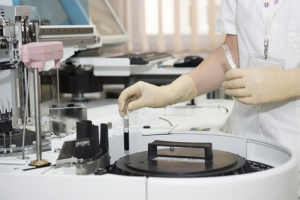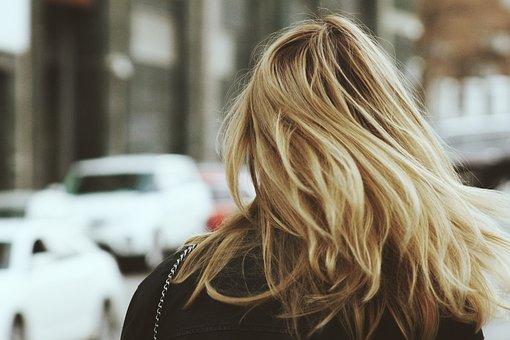Silenttest.com may earn a commission when you purchase products from companies we are affiliated with through promoting their products, at no extra cost to you. Prices are the same when buying products through an affiliate or non-affiliate link. Full Disclosure
When drugs are consumed, they can be detected in various parts of the body for varying lengths of time, depending on factors such as the type of drug, the frequency and duration of use, and the individual’s metabolism.
One method of drug testing is analyzing hair follicles, which can provide a longer detection window than other methods such as urine or blood tests.
This is because drug metabolites can become trapped in hair shafts and remain there for months, potentially revealing a history of drug use over an extended period.
In this guide, we will explore how long drugs can stay in hair follicles, what factors can influence the detection window, and how to pass a hair follicle drug test. Stay tuned!
What is a hair follicle drug test?


Hair follicle drug testing is a method of drug testing that analyzes a small sample of hair to detect the presence of drugs or their metabolites in the body.
The hair sample is taken from the scalp, but can also be taken from other parts of the body. Hair follicle drug testing can detect drug use over a longer period of time than other types of drug tests, such as urine or blood tests, because drugs can remain in hair for months after they were used.
This type of drug testing is often used by employers or law enforcement agencies as part of a drug screening process.
It can detect a wide range of drugs, including marijuana, cocaine, opiates, amphetamines, and prescription drugs.
Why is hair follicle drug test used?


Hair follicle drug test is used for a variety of reasons.
It can be used by employers to screen job candidates or employees for drug use, by law enforcement agencies to test for drug use in criminal investigations, and by healthcare professionals to monitor patients who are receiving drug treatment. It is also sometimes used in child custody cases or other legal disputes where drug use is a factor.
One advantage of hair follicle drug testing is that it can detect drug use over a longer period than other drug tests, such as urine or blood tests.
Since drugs and their metabolites can be deposited in hair follicles for several months after use, hair follicle drug testing can detect drug use that occurred weeks or even months prior to the test.
Additionally, hair follicle drug testing is considered to be more difficult to cheat or falsify than other drug tests, making it a more reliable method of detecting drug use.
Detection windows for different drugs in hair follicles


The detection window for drugs in hair follicles varies depending on several factors, such as the drug’s half-life, frequency of use, dosage, individual’s metabolism and hair growth rate.
Generally, drugs can be detected in hair follicles for a longer period than in other drug test samples, such as blood or urine.
Here are some approximate detection windows for commonly abused drugs in hair follicles:
- Cannabis (THC) – Up to 90 days
- Cocaine – Up to 90 days
- Amphetamines – Up to 90 days
- Opiates – Up to 90 days
- Phencyclidine (PCP) – Up to 90 days
- Methadone – Up to 90 days
- Benzodiazepines – Up to 90 days
- Barbiturates – Up to 90 days
- MDMA (Ecstasy) – Up to 90 days
- Steroids – Up to 12 months
Drugs Incorporation into hair follicles


Drugs get incorporated into hair follicles through a process called “incorporation” or “diffusion”.
Drug incorporation occurs whereby, after consuming the drugs, they are absorbed into the bloodstream and carried to the hair follicle via the capillary network that surrounds it.
Once in the hair follicle, drugs can bind to melanin, the pigment that gives hair its color. Melanin is also present in the hair shaft and the hair root, which means that drugs are trapped in the hair as it grows.
Drugs can also bind to proteins in the hair shaft, such as keratin, which can result in drug accumulation over time.
The amount of drug that becomes incorporated into the hair depends on several factors, including the drug’s properties, the dose and frequency of drug use, and the individual’s metabolism.
The process of drug incorporation into hair is slow, and it can take several days to several weeks for drugs to become detectable in hair samples. This may make it easy for you to pass a hair follicle test especially in your first days of drugs.
However, once incorporated, drugs can remain in the hair for several months or even years, depending on the length of the hair and the frequency of drug use.
This makes hair analysis a useful tool for detecting drug usage, particularly for drugs that are difficult to detect in other drug test samples such as urine or blood.
Hair analysis is often used in forensic and workplace drug testing, as well as in drug treatment programs to monitor compliance with treatment.
Factors that affect drug detection in hair follicles


There are several factors that can affect drug detection in hair follicles, including:
1.Hair growth rate: The rate of hair growth can vary between individuals, which can affect how long drugs stay detectable in hair.
Faster hair growth may result in shorter detection windows, while slower hair growth may extend the detection window.
2.Hair color and thickness: The color and thickness of the hair can affect drug detection, as darker, thicker hair tends to hold onto drugs longer than lighter, thinner hair.
3.Drug dose and frequency of use: The amount and frequency of drug use can impact how much of the drug is present in the hair follicle, which can affect detection times.
4.Drug type: Different drugs have different properties and metabolites, which can impact how long they remain detectable in hair follicles.
For example, marijuana can be detected in hair for up to 90 days after use, while cocaine may only be detectable for up to 3 months.
5.Hair treatment: Chemical treatments, such as hair dye or bleach, can damage the hair and potentially affect drug detection.
Hair products like shampoos and conditioners can also impact drug detection by either removing or masking drug residues.
6.Environmental exposure: External factors such as exposure to smoke or pollution can contaminate the hair and potentially affect drug detection results.
It is important to consider these factors when interpreting drug test results from hair follicles.
the process of hair follicle drug testing


Hair follicle drug testing is a technique used to detect drug use over a period of several months. The process of hair follicle drug testing involves the following steps:
1.Collecting a hair sample
The first step in hair follicle drug testing is to collect a hair sample. It involves cutting a small amount of hair from the back of your head near the scalp.
The hair is usually cut as close to the scalp as possible to ensure that the sample includes the most recent growth.
If you have no head hair, you are not lucky, remember hair can be picked from any other part of your body.
2.Preparing the hair sample
Once the hair sample has been collected, it is prepared for testing.
This process involves washing the hair to remove any contaminants or external substances that may be present on the hair.
3.Testing the hair sample
After the hair sample has been prepared, it is tested for drug use. Hair testing is done by using a method called immunoassay, which detects the presence of drug metabolites in the hair.
If the immunoassay test is positive, a confirmatory test is then performed to verify the results.
4.Analyzing the results
Once the hair sample has been tested, the results are analyzed to determine if there has been drug usage.
The results of the hair follicle drug test can typically detect drug use over a period of 90 days or longer, depending on the length of the hair sample collected.
Hair follicle drug testing is a reliable method of detecting usage of drugs over an extended period of time.
It is a popular choice for employers and law enforcement agencies because it is difficult to cheat and can detect drug use that may not be detected by the other types of drug tests, such as urine, saliva, or blood tests.
how to pass a hair follicle drug test


A hair follicle drug test is a type of drug screening test that can detects the presence of drugs in your hair. This type of test is particularly difficult to beat because it can detect drug use from several months prior.
That does not mean that you still can’t pass the test. It takes having the right kit and applying the right process to flush the toxins from your hair.
- Stop using drugs
The most effective way to pass a hair follicle drug test is to stop using drugs altogether. If you have not used drugs for at least 90 days, your hair should not contain any detectable drug metabolites.
What if you have been using drugs and your test is due? then there is a way, you can detox your hair and still pass the test.
- Shave your head
While not an ideal solution, shaving your head will remove any drug traces from your hair. However, be aware that some companies may consider this suspicious and could refuse to hire you.
So, in this case, shaving the hair is no the way to go! The next point has the solution.
- Use a detox shampoo
There are special shampoos available that remove drug traces from your hair. For instance using Old Style Aloe Vera shampoo has saved many people when it comes to passing a hair follicle test.
There is a specific method that you will need to follow while using the product, which is the Macujo method. No complications, follow the instructions as per the product and the process.
- Masking agents
You can as well use masking agents to try to hide drug traces in their hair. However, most of these products are ineffective, and some may even trigger a failed drug test result.
- Use a hair drug test avoidance method
Certain hair drug test avoidance methods, such as shaving all of your body hair or trying to dye the hair for the test, may work in some situations. However, these methods are risky and can result in serious consequences.
In any case, with the right approach, you can pass a hair follicle test. It is the hardest test but things just got easier with old style shampoo, grab yours!
FAQS


Do all drugs show up in hair follicle test?
Not all drugs may show up in a hair follicle test.
Drugs that are most commonly detected in a hair follicle test are those that are lipid-soluble, which means they can be stored in the hair follicles for a long period of time. These include drugs such as cocaine, methamphetamine, heroin, and marijuana.
On the other hand, some drugs may not be detected in hair follicle tests, particularly those that are water-soluble and do not bind well to the hair follicles. These include drugs such as LSD and MDMA (ecstasy).
That does not mean you are on the safest side, drugs with lesser likelihood of being detected in a hair follicle test can turn out to be highly detectable in urine drug tests
What shampoo removes drugs?
The most reliable shampoo to detox your hair for drug test is the old style aloe toxin shampoo. It is used on the hair just like the normal shampoo but for this case.
You will be required to follow a particular process in order to make sure your hair is completely detoxed before the day of your hair follicle test.
Does vinegar clean hair follicles?
Using vinegar on the hair and scalp can have some potential side effects, such as irritation and dryness, especially if it is not diluted properly or if it is used too frequently.
Consider using hair care products containing vinegar as an ingredient, which may be less harsh on your hair and scalp.
But, for the sake of a drug test, chose a more reliable method that will save you time trying out detox techniques of which might end up disappointing you.
Final Verdict
If you are a heavy/daily user of drugs, then know drugs can easily get detected in your hair that with light/regular users.
Detection goes up to 90 days for most substances and can take longer if no appropriate measures are taken to flush out the toxins.
